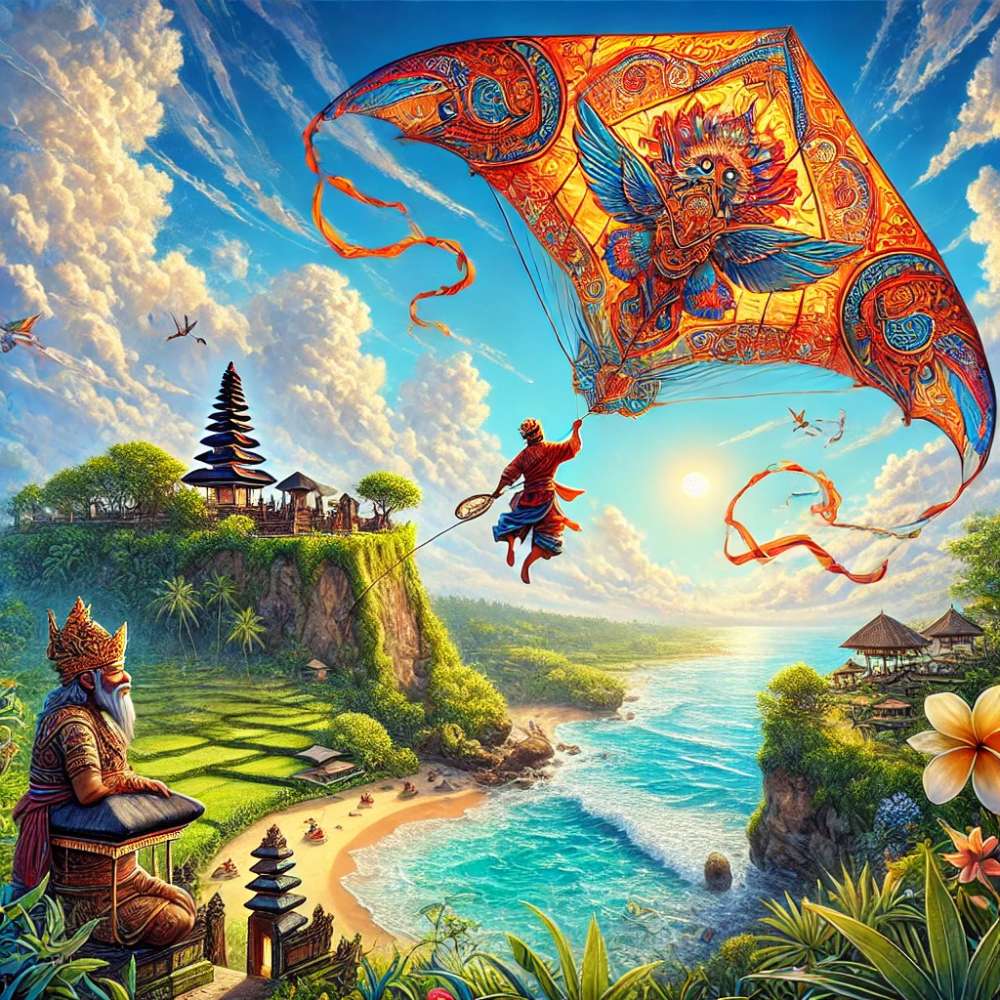
Once upon a time, there lived in the village of Kamasan, just on the outskirts of Klungkung, a talented painter by the name of Lobangkara. Painting was his whole life, and so he spent all his time at it, heedless of what people said and of the way the world went around him.
The world around, however, did not go without noticing him. He had gained fame. So, one day, a summoning came from the king of Klungkung, ordering him to come for an audience. There he went, and asked his lord why he had been summoned. “Because your name has come to me, O, Lobangkara. People say that you can make marvels. I want a new palace, so make me a palace among the palaces, one that may revive the memory of the Majapahit era and all its splendours (the kingdom that occupied Bali in 1343). Build me this palace, fill it with beautiful statues.
In one month Lobangkara had build the new palace, complete with beautiful statues of heavenly nymphs. The king was surprised and pleased and so he told him. “Oh Lobangkara, if you are so gifted at making statues, perhaps you are gifted at making my wife’s portrait too. If you can do it properly, it will mean that you are truly gifted.” To which Lobangkara curtly, but politely replied: “Just let me see the profile of your lady, and I shall fulfil your wish.
Lobangkara was shown the king’s wife, and he painted her in a very short time, down to her face’s smallest wart. When he was finished, he took the painting to his lord, who could not believe his eyes: He had made an exact replica of his wife’s face in such a short time. It was somehow irritating. So he told him to go and paint all the animals of the forest, the deer, the gazelle, the mouse-deer, the tiger and many others.
So Lobangkara took the path to the forest. He first met the tiger and, to his own surprise, it was tame, so he could paint it without difficulty. After this first portrait, Lobangkara continued on his way. He met the deer and painted it too, without any problem. And thus he carried on, walking and painting all the animals of the forest. When it was over, he went back to the forest and showed his pictures to the king. Again the king was surprised to see that Lobangkara had succeeded in painting all the animals of the forest. But not overly enthusiastic though. He told him: “Oh Lobangkara, now I summon you to go and paint all the content of the sea.” To which Lobangkara replied: “I shall do so my lord, but I cannot plunge into the sea, unless you give me a hollow globe of glass, so I won’t drown.” So he was given a glass globe which he took along with him on his journey to the bottom of the sea. He entered the globe, and from there saw a great number of fish and sea creatures, which all of them he painted. When he was done, he went back to the shore, got out o his globe, and directly headed for the palace.
The king was increasingly impressed by the talent of Lobangkara, but somehow not yet satisfied. So he ordered Lobangkara to paint all the content of the sky. But Lobangkara could not fly and complained about it to the king, who replied. “If you cannot fly, take a big kite and, with it, I am sure you will be able to fly and paint all the birds and creatures of the sky.
Lobangkara did so. He climbed onto the kite, and off they went up into the sky. Somehow the kite flew higher and higher, becoming smaller and smaller, until it was not even a spot in the sky. The rope broke, and Lobangkara went higher and higher, continuing to climb and climb.
The story said that the kite brought Lobangkara to the heavens. Awed at the beauty around him, and at the gentleness of the gods, he decided that it was better to stay there than to return to the middle world of humans, whose avidity is never satisfied.









